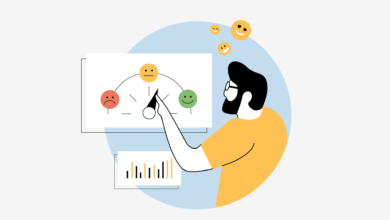How Marketers Can Stop Fueling Customer Loss For Good

If you’re like me, in the last 12 months you’ve heard of Alex Hormozi’s book “100 Million Dollars” at least half a million times. It’s like every business coach says the same thing: “You have to have an irresistible offer, otherwise you’ll never sell anything, die, and be buried in a poor man’s grave.” »
Honestly, it annoys me every time I hear it. This is not out of disrespect for Hormozi’s work. This just reminds me of an investing heuristic called the barbershop fallacy, which says you should never follow your barber’s advice because, chances are, the advice is trite and generic, overly simplified or misguided.
Why Obvious Answers Are Hurting Your Business
The hair salon mistake isn’t just about following the advice of the wrong people. It’s also about the seductive dangers of obvious answers. This barber gives you investment advice without understanding or considering your goals, risk tolerance, or portfolio strategy. They just point out what’s obvious, not what’s right for you. And in the end, following their advice can be extremely risky.
For example, in 2013, fitness startup ClassPass fell prey to its version of the barbershop fallacy. It launched what seemed like an obvious home run — unlimited access to boutique fitness classes for just $99 a month — a real steal when individual classes typically cost $20 to $35 each. And it was marketed to fitness enthusiasts in big cities for whom this level of access to premium studios would be a dream come true.
The value proposition and target market were clear. The offer was truly “irresistible” and the growth was explosive. However, it was also completely unsustainable.
ClassPass attracted “super users” – customers who took 20 or more classes per month. Although these users seemed ideal on the surface, they caused ClassPass to lose money because the company had to pay the studios for each visit. The problem was compounded by marketing strategies emphasizing value and variety, attracting bargain seekers rather than a sustainable customer base who valued the core offering of fitness exploration.
The High Cost of Marketing to the Wrong Audience
What seemed like a clear marketing victory ended up causing massive instability and nearly sinking the company. Over the course of three years, their out-of-control marketing efforts and unsustainable business model forced them to raise their prices, move to a tiered pricing structure, and eliminate their “unlimited” course option. These changes triggered a massive loss of customers and intense public backlash.
ClassPass was able to recover because they were large enough to fit. But how many other businesses have been pushed into a marketing-driven churn spiral from which they couldn’t escape?
Dig Deeper: Why keeping the customer is better than finding a new one
How Marketing Fuels Customer Loss
As marketers, we often say, “I just brought in leads. Sales qualifies them and closes the deal, while operations and customer support keeps them happy. But look where that mindset has taken ClassPass. It’s like a chef saying, “I just put food on plates.” This ignores the responsibility of serving the right food to the right customer, avoiding wasting ingredients, and maintaining food quality, which ultimately protects the reputation and long-term success of the restaurant.
Business is a holistic and symbiotic system. The actions of one department affect all others. As marketers, our actions can actively contribute to our company’s churn rate, without even realizing it.
How can we avoid becoming another cautionary tale? By using the right leads. Bringing bad leads is just as bad as not bringing any. Marketing anything that isn’t the right thing to the right person increases your customer churn, including any mismatch between what you promise and what you actually deliver. All of this sets your business up for failure.
3 Ways Marketers Can Fix Customer Churn
Specifically, there are three things you can do to reduce marketing-induced customer churn.
1. Clarify your customer
It may seem simple, but fundamentals win in ball games. Unfortunately, most marketing teams don’t take the time to thoroughly investigate and discover their true customers. Instead, they rely on the assumptions and intuition of executives – the people furthest from knowing customers. Talk about the blind leading the blind.
In a previous articleWe talked about the biggest ideal customer profile mistakes marketing teams make and how to fix them. It starts by looking beyond vague demographics and examining the profitability of your customer base. It also involves dividing your customers into an ecosystem of payers, who write checks, users who use your offering, and decision makers who choose to hire you.
2. Let customers define value
In organizations, it’s easy to take inspiration from the development or operations team when we explain why our product is great. But your customer doesn’t care if your pocket knife has a corkscrew, unless they need to open wine bottles. Your business exists at the mercy of your customers — it all depends them.
If you want to know why your offering is all that and a bag of chips, stop listening to developers thinking about “what would be cool” and listen to your customers and their needs. This will tell you what to promote.
Ultimately, it’s not about creating offers that make customers say, “Hell yes!” That’s what ClassPass did and it almost killed them. It’s about creating offers that serve your customers and getting them to say, “That’s exactly what I needed!”
3. Use your product
Marketers often visit a website once or twice, briefly explore the product and watch someone else use it, then assume they completely understand it. It’s like thinking I can play Vivaldi’s Summer or Gershwin’s Rhapsody in Blue* just because I watched a performance – it just doesn’t work that way.
Instead, play the role of the customer. Imagine you are trying to accomplish something specific and you are using your product or service to do it. It’s a deep dive into your customer’s experience. Keep an eye out for what frustrates you, what isn’t clear, or what makes sense. This will tell you what your product does and who you should sell it to.
Dig Deeper: How to identify high churn personas in B2B and mitigate their risks
Churn isn’t just a sales problem
As marketers, we can’t afford to focus solely on lead generation and hope that someone else will take over. ClassPass shows us the cost of making a mistake, regardless of intentions. Customer churn is everyone’s problem, but it often starts with us.
Are you targeting the right customer or just the most obvious one? Don’t guess, investigate. Talk to your customers and test your hypotheses with data. The answers are there, but only if you dig deep.
But the good news is that the juice is worth it. When you attract the right customers who value your offering and stick around, you reduce customer churn and strengthen the entire organization. It’s not only good marketing, it’s also good business.
Contributing authors are invited to create content for MarTech and are chosen for their expertise and contribution to the martech community. Our contributors work under the supervision of the writing and contributions are checked for quality and relevance to our readers. The opinions they express are their own.



